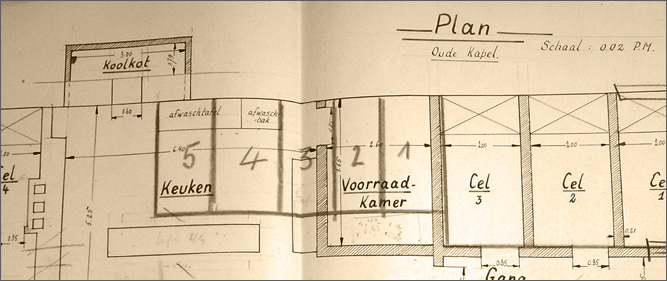
WP4: Long-term (Self-)Representations of Justice
This WP departs from the idea that “not only must Justice be done; it must also be seen to be done”. One of the most important relationships of justice to society and its citizens consists of the ways in which justice is represented and presents itself to the outside world. These (self-)representations are manifold and can be expressed through and shaped by various ‘media’, ranging from, for example, “sites of justice” such as monuments, buildings and execution sites, and literary, visual and other expressions in popular culture, to expert discourses, judicial statistics and law reviews reflecting a “scientific” professional culture of justice as well as technical information.
Since this field is so vast and an integrated multidisciplinary approach is still in the making at the international level, it has been decided to combine two targeted in-depth research projects with smaller exploratory studies. The two main projects are concerned with judicial iconography, allowing Belgium to catch up with this highly developed international field of research, and the new domain of judicial archaeology, with a focus on the “built” representations of justice such as court rooms, prison buildings, police quarters, etc. An important area for exploratory research concerns the role played by visual material and literature related to the judicial sphere in constructing collective representations of Society, more in particular in the representation of the colonial order, in the development of a ‘scientific culture of justice’ and in the symbolic representation of State power in the urban context.
Coordinators: Xavier Rousseaux & Veerle Massin
Partners involved: All
Associated research projects
- Amandine De Burchgraeve, The Social Construction of Crime Representations. The Actors of the Criminal Court of Brabant and the Evolution of the Discourses on "Crime", "Criminal" and "Victim" (1890-1914) (UCL)
- Gaëlle Dubois, Banners of Judicial Power? The Architectural Speeches of Courthouses from the Independence to the First World War (UCL)
- Stefan Huygebaert, Art, Society and Law. An Iconological Study of Continuity and Change in Belgian Legal Iconography, 1787–1914 (UGent)
- Julie Louette, The Belgian Criminal Statistics, a Tool of Knowledge and Governance (1870-1930) (UCL)
Some realisations of WP4
- VUB Law and Criminology talks: Lecture by Stefan Huygebaert Aensien doet ghedenken in fin de siècle Belgium. The decoration projects for the Brussels Palais de Justice (1883-1914) (Brussels, 24 March 2014)
- Joint IAP session Seeing is Believing. Representations of Justice by Intermediating Actors in Belgium and France, 19th-early 20th century, 10th European Social Science History Conference (Vienna, 24 April 2014)
- Lecture by Professor Desmond Manderson Klimt’s Jurisprudence: Sovereign Violence and the Rule of Law (Ghent, UGent, 29 September 2014)
- Seminar Une 'nouvelle' justice : les représentations de la justice au 19e siècle, à travers la presse, les palais de justice et la cour d'Assises (Louvain-la-Neuve, 18 February 2015)
- Workshop Lex in the City. Long-term (Self)Representations of Justice and Public Reconciliation in the Low Countries and in Belgium (Brussels, 17 December 2015, co-organisation with IAP 7/26 City and Society in the Low Countries (1200-1850)
The Interuniversity Attraction Pole P7/22 "Justice & Populations: The Belgian Experience in International Perspective, 1795-2015" (BeJust 2.0) is part of the Interuniversity Attraction Poles Programme Phase VII (2012-2017), financed by the Belgian Science Policy Office of the Belgian State.
The IAP VII/22 Justice & Populations www.bejust.be is the outcome of a collaboration between the Cegesoma, the IAP coordination team (CHDJ-UCL) and the Royal Military Academy. Design: tangografix. Powered by Drupal
